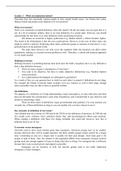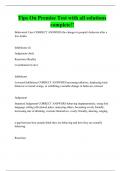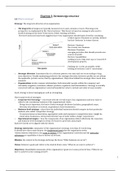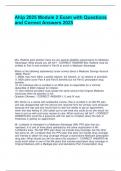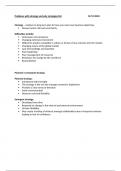Genetic s
Gregor Mendel - the Father of Genetics
Back story
Gregor Mendel an Austrian monk. He entered a monastery what is now the Czech
Republic. University of Vienna, he studied botany, mathematics & other sciences.
Returning to the monastery,
he began experiments on garden peas
studies that would reveal fundamental principles of genetics.
Many scientists believed the traits of a child’s parents = blended in offspring, producing
a child with intermediate characteristics.
Because the ova of sexually reproducing organisms are much larger than sperm,
some scientists believed that the female had a greater influence on the
characteristics of the offspring than the male.
Mendel designed studies to examine these assumptions.
he studied inheritance in pea plants.
Used pea plants to study how a particular characteristic was passed from one generation
to the next. The pea plants that he used had opposing characteristics, e.g. long or short
stems, smooth or wrinkled seeds, green or yellow seeds.
First he test planted the plant for two years, self-pollinating them by hand to make sure
they were pure-breeding (homozygous) and therefore their offspring were identical for a
number of generations.
Then he performed his experiments, using forceps to self or cross pollinate plants
which he wanted to study, and he followed their characteristics from generation to
generation.
The first set of plants that is crossed in an experiment is called the parental generation
(P), their offspring is called the first filial generation (F1).
The F1 generation can be self-pollinated, or they can be cross- pollinated with other
plants, they produce the second filial generation or F2.
Mendel found that the inheritance of characteristics is determined by genes.
He also found that genes for a particular characteristic occurred in pairs, and within
the pair, the two genes may be the same, or they may be different.
He found that if the two genes were different, then the action of the one of the two
was dominant over the action of the other, which is called the recessive gene.
As a result of his experiments, Mendel formulated a number of laws.
, Mendel's work was rejected, and not widely accepted until after he died.
At that time most biologists held idea of blending inheritance,
Charles Darwin's efforts to explain inheritance were unsuccessful.
Mendel's ideas = rediscovered in twentieth century, & in the 1930s and 1940s modern
synthesis combined Mendelian genetics with Darwin's theory of natural selection.
By 1900, research aimed at finding a successful theory of discontinuous inheritance
rather than blending inheritance
Led to independent duplication of work by Hugo de Vries & Carl Correns, & rediscovery
of Mendel's writings & laws.
Both acknowledged Mendel's priority, & thought probable that de Vries didn’t
understand results he found until after reading Mendel. Biologists started to establish
genetics a science. Mendel's results = quickly replicated, genetic linkage worked out.
Biologists flocked to theory, even though it was not yet applicable to many phenomena,
it sought to give a genotypic understanding of heredity which they felt was lacking in
previous studies of heredity which focused on phenotypic approaches.
Most prominent of these latter approaches was biometric school of Karl Pearson & W.F.R.
Weldon, based heavily on statistical studies of phenotype variation.
Strongest opposition to this school came from William Bateson, who perhaps did most in
early days of publicising benefits of Mendel's theory (word "genetics", & much of
discipline's other terminology, originated with Bateson).
This debate between biometricians & Mendelians was extremely vigorous in first 2
decades of twentieth century, with biometricians claiming statistical & mathematical
rigor, whereas Mendelians claimed a better understanding of biology.
In end, 2 approaches were combined as modern synthesis of evolutionary biology,
especially by work conducted by R. A. Fisher as early as 1918.
Mendel's experimental results have later been object of considerable dispute.
Fisher analysed results of F2 (second filial) ratio & found them to be implausibly close to
exact ratio of 3 to 1.
Only a few would accuse Mendel of scientific malpractice or call it a scientific fraud
— reproduction of his experiments has demonstrated the validity of his hypothesis
— however, the results have continued to be a mystery for many, though it is often
cited as an example of confirmation bias.
This might arise if he detected an approximate 3 to 1 ratio early in his experiments with a
small sample size, & continued collecting more data until results conformed more nearly
to an exact ratio.
He may have censored his results, and that his seven traits each occur on a separate
chromosome pair, an extremely unlikely occurrence if they were chosen at random.
Gregor Mendel - the Father of Genetics
Back story
Gregor Mendel an Austrian monk. He entered a monastery what is now the Czech
Republic. University of Vienna, he studied botany, mathematics & other sciences.
Returning to the monastery,
he began experiments on garden peas
studies that would reveal fundamental principles of genetics.
Many scientists believed the traits of a child’s parents = blended in offspring, producing
a child with intermediate characteristics.
Because the ova of sexually reproducing organisms are much larger than sperm,
some scientists believed that the female had a greater influence on the
characteristics of the offspring than the male.
Mendel designed studies to examine these assumptions.
he studied inheritance in pea plants.
Used pea plants to study how a particular characteristic was passed from one generation
to the next. The pea plants that he used had opposing characteristics, e.g. long or short
stems, smooth or wrinkled seeds, green or yellow seeds.
First he test planted the plant for two years, self-pollinating them by hand to make sure
they were pure-breeding (homozygous) and therefore their offspring were identical for a
number of generations.
Then he performed his experiments, using forceps to self or cross pollinate plants
which he wanted to study, and he followed their characteristics from generation to
generation.
The first set of plants that is crossed in an experiment is called the parental generation
(P), their offspring is called the first filial generation (F1).
The F1 generation can be self-pollinated, or they can be cross- pollinated with other
plants, they produce the second filial generation or F2.
Mendel found that the inheritance of characteristics is determined by genes.
He also found that genes for a particular characteristic occurred in pairs, and within
the pair, the two genes may be the same, or they may be different.
He found that if the two genes were different, then the action of the one of the two
was dominant over the action of the other, which is called the recessive gene.
As a result of his experiments, Mendel formulated a number of laws.
, Mendel's work was rejected, and not widely accepted until after he died.
At that time most biologists held idea of blending inheritance,
Charles Darwin's efforts to explain inheritance were unsuccessful.
Mendel's ideas = rediscovered in twentieth century, & in the 1930s and 1940s modern
synthesis combined Mendelian genetics with Darwin's theory of natural selection.
By 1900, research aimed at finding a successful theory of discontinuous inheritance
rather than blending inheritance
Led to independent duplication of work by Hugo de Vries & Carl Correns, & rediscovery
of Mendel's writings & laws.
Both acknowledged Mendel's priority, & thought probable that de Vries didn’t
understand results he found until after reading Mendel. Biologists started to establish
genetics a science. Mendel's results = quickly replicated, genetic linkage worked out.
Biologists flocked to theory, even though it was not yet applicable to many phenomena,
it sought to give a genotypic understanding of heredity which they felt was lacking in
previous studies of heredity which focused on phenotypic approaches.
Most prominent of these latter approaches was biometric school of Karl Pearson & W.F.R.
Weldon, based heavily on statistical studies of phenotype variation.
Strongest opposition to this school came from William Bateson, who perhaps did most in
early days of publicising benefits of Mendel's theory (word "genetics", & much of
discipline's other terminology, originated with Bateson).
This debate between biometricians & Mendelians was extremely vigorous in first 2
decades of twentieth century, with biometricians claiming statistical & mathematical
rigor, whereas Mendelians claimed a better understanding of biology.
In end, 2 approaches were combined as modern synthesis of evolutionary biology,
especially by work conducted by R. A. Fisher as early as 1918.
Mendel's experimental results have later been object of considerable dispute.
Fisher analysed results of F2 (second filial) ratio & found them to be implausibly close to
exact ratio of 3 to 1.
Only a few would accuse Mendel of scientific malpractice or call it a scientific fraud
— reproduction of his experiments has demonstrated the validity of his hypothesis
— however, the results have continued to be a mystery for many, though it is often
cited as an example of confirmation bias.
This might arise if he detected an approximate 3 to 1 ratio early in his experiments with a
small sample size, & continued collecting more data until results conformed more nearly
to an exact ratio.
He may have censored his results, and that his seven traits each occur on a separate
chromosome pair, an extremely unlikely occurrence if they were chosen at random.

